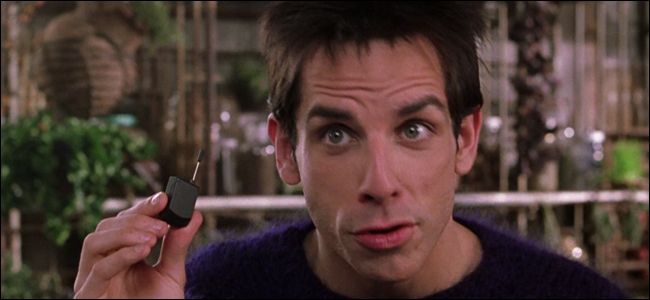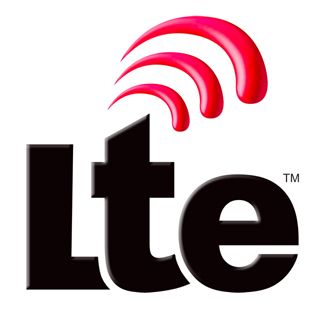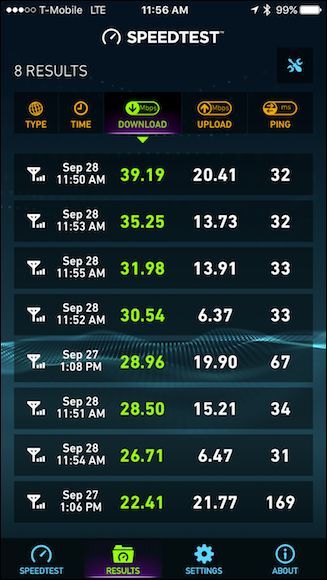Quick Links
You've heard it in commercials, seen it plastered across billboards, and maybe even read about it in your cellphone plan. But what is 4G LTE, and how do its speeds and coverage compare to other 3G and 4G networks?
A History of 3G and 4G
To understand what LTE is--beyond "a really fast network"--we have to take a step back in time. You probably remember when the 3G, or 3rd generation, standard was a big deal in the 2000s--it made accessing the internet on your phone significantly faster and more convenient.
3G is required to meet IMT-2000 (International Mobile Telecommunications-2000) technical standards, which means a peak download rate of 200 Kbps, or 0.2 Mbps. This may seem slow to you now, but at the time, it was enough to get your email in a timely fashion.
Logically, the next step after 3G--the third generation of wireless mobile communications technology--would be 4G, or the fourth generation. The the ITU Radiocommunications Sector (ITU-R) set some requirements as to what would constitute a 4G network: it must provide peak 100 Mbps downloads if you're using a mobile device such as a phone or tablet. More stationary devices, such as mobile hotspots, should provide peaks speeds of 1 Gbps.
In more recent years, 3G has made some advancements. High Speed Packet Access (HSPA), for example, can offer theoretical speeds up to 7.2 Mbps, and is often called 3.5G or Turbo 3G.
Then came 4G, in the form of Evolved High Speed Packet Access (HSPA+) and Long-Term Evolution (LTE). Both were marketed this as "4G", even though they didn't meet the ITU's standards--neither reached that 100 Mbps download rate.
LTE, however, wasn't just another improvement of 3G. It was meant to be more of an umbrella term given to the technologies designed to get us to the 4G standard. In other words, it's what 4G will be be when the technology evolves enough to provide those speeds. It's 4G-Eventually.
As a way of compromising, the ITU-R decided that mobile carriers could market LTE (and HSPA) as 4G, since they represented a significant improvement over 3G and paved the way for true 4G speeds.
How LTE Stacks Up in Speed and Coverage
Okay, we're done with the history lesson. Let's tackle the question that truly matters: What kind of speeds does LTE actually offer right now? Frankly, it depends on where you are and who you are using for your wireless service.
According to a report by Open Signal, the average LTE download speed in the US is 9.9 Mbps while the global average is 13.5 Mbps. That's far off the ideal 100 Mbps 4G standard, but a marked improvement over old 3G speeds. In a race between the big four US wireless carriers, even the highest average speed (Verizon) was just over 12 Mbps.
Remember, that's an average. Your speed may be faster, or it could be slower. As you can see to the right, I used Speedtest app on my iPhone 6S (which is available for Android as well) on T-Mobile in Florida, and mine were much higher (albeit still way below 100 Mbps).
But it's not just about speed: coverage matters too. After all, if you never see that "LTE" icon in the menu bar of your phone, you won't ever get those highly-advertised speeds.
Coverage depends on your carrier. Each of the four major US carriers--AT&T, Sprint, Verizon, and T-Mobile--utilize different frequency bands, which is how they separate their signals from one another. A frequency band is a group of radio frequencies mobile carriers thus use to communicate with clients, i.e. your smartphone, and vice-versa.
LTE, in its current specification, allows carriers to deploy it on different frequency bandwidth blocks. In essence, a bandwidth block is how much space a carrier allocates to a network. Currently, both Verizon and T-Mobile have dedicated the widest channels for their LTE from 10MHz to 15MHz, all the way up to 20MHz.
Network coverage at lower frequencies, particularly the 700Mhz range, will provide LTE access in more locations such as buildings and sheltered areas. In fact, in terms of coverage--measured by how much time subscribers are able to get an LTE signal, the top 3 carriers have almost reached parity.
According to the oft-cited OpenSignal report, Verizon comes out on top, with nearly 87% coverage, followed by AT&T 82.6%, and T-Mobile at 81.2%. Sprint comes in a distant fourth at 70%. Remember, these show the proportion of time subscribers get an LTE signal, not a geographic percentage of land--but that's still quite good.
The Future: LTE Advanced and 5G
That's the present. So what about the future?
Mobile speeds will no doubt continue to advance and gain speed. LTE Advanced is the new standard companies are hyping, which promises to finally deliver "True 4G" speeds. So basically, LTE Advanced is what 4G was supposed to be all along.
5G, meanwhile, will be the next logical step up from 4G. As you might guess, 5G stands for fifth generation, and is supposed to promise speeds up to 10 gigabits per seconds--enough to download a full HD movie in mere seconds.
Unlike LTE, which occupies lower frequency bands, 5G can occupy both lower frequency bands and ultra-high bands. Using these higher bands means 5G won't travel as far as 4G LTE and will need to be boosted to make it practical to a wide audience. None of this matters much at this point however, as the technical standards are still being worked out and won’t be finalized until 2020.
For right now, 4G LTE is good enough for the vast majority of mobile users, and will be for some time. Logically, if or when True 4G or LTE Advanced becomes the norm, it will suffice for a time while mobile providers roll out 5G and so on.



